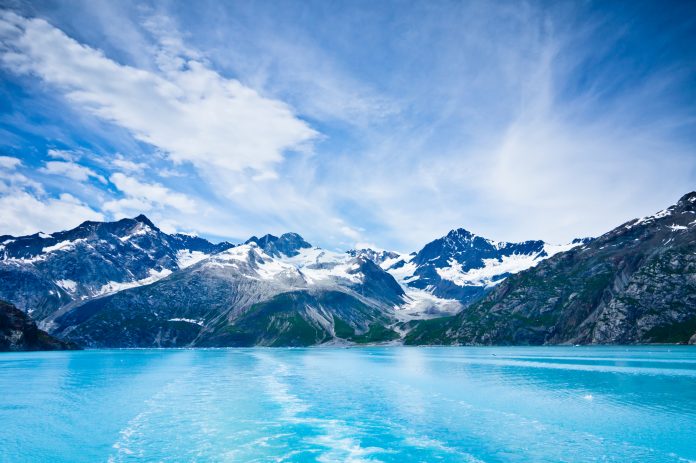Danielle Baron, Director of Education Innovation at Think Ocean CIC examines the Alaskan permafrost within the polar region and the implications of climate change in the area
The polar region of Alaska in the Arctic is undeniably one of Earth’s most vital and productive places. Its unique ecosystems, featuring diverse wildlife like polar bears, seals, and Arctic foxes, have adapted to thrive in extreme cold conditions.
The region’s significance extends beyond its frozen landscapes; it plays a critical role in regulating global climate patterns, with its ice acting as a reflective shield that helps control Earth’s temperature.
The Arctic stores substantial carbon in its permafrost, making it crucial to climate regulation efforts.
Indigenous communities, such as the Inuit and Sami, are deeply connected to the Arctic, offering valuable traditional knowledge. However, the Arctic faces existential challenges, primarily due to climate change, necessitating international efforts to protect and conserve this fragile and essential environment.
The importance of permafrost in Alaska
The delicate balance between what is frozen and what is thawed in the Arctic and other cold regions hinges on a complex interplay of temperature fluctuations, solar radiation, permafrost stability, ocean currents, snow cover, and the albedo effect. During winter, frigid temperatures freeze water, forming ice and permafrost, while summer’s extended daylight and warmer temperatures induce thawing.
Permafrost is a crucial component in preserving the frozen state of these regions. It prevents water from infiltrating deep into the ground and maintains stability. However, this equilibrium is being disrupted by climate change, which is causing rapid warming and unprecedented ice melt, permafrost thaw, and alterations in the delicate balance with profound implications for ecosystems, indigenous communities, and global climate systems.
The Arctic’s abundant fish and wildlife are of paramount significance to the lives and traditions of regional indigenous peoples like the Sami. These natural resources have been the cornerstone of the Sami way of life for generations, providing sustenance, clothing, and cultural meaning. Reindeer herding, hunting, and fishing have served as economic activities and cultural practices deeply intertwined with Sami identity and spirituality. Their traditional clothing, songs, and stories deeply connect to the Arctic environment and its diverse species.
The impact of climate change
However, climate change and modern challenges threaten this delicate balance, requiring the Sami to adapt while striving to preserve their cultural heritage and maintain a sustainable coexistence with the Arctic’s unique ecosystems. Their involvement in reindeer feeding has recently increased significantly because of climate change. This change has led to ice encasement, restricting the reindeer’s ability to graze as freely as they once did, primarily because ice layers now obstruct access to vegetation.
One of the most visible and concerning effects of climate change in the Arctic is the dramatic reduction in the polar ice cap. Since 2005, the polar ice cap has decreased by nearly 40%.
This alarming trend is primarily attributed to rising temperatures, which cause the ice to melt at an accelerating rate. As the ice cap shrinks, it contributes to rising sea levels and disrupts the delicate balance of the global climate system.
Endeavours to mitigate climate change and protect the Arctic are of paramount importance. International agreements and initiatives aim to reduce greenhouse gas emissions, limit global warming, and preserve this critical region. Adapting to the changes already underway and understanding their broader implications is crucial to addressing the climate change challenges in the Arctic and beyond.
When permafrost melts storms intensify
Coastal villages like Shishmaref are increasingly disappearing as permafrost melts and storms intensify due to climate change. The thawing permafrost weakens the stability of the land, while the loss of protective sea ice leaves these communities vulnerable to the erosive forces of the sea. Intensifying storms further accelerate coastal erosion, damaging infrastructure and threatening homes.
The complex relocation process becomes a potential solution but presents significant logistical and cultural challenges for the affected communities.
Permafrost degradation and lake drainage
In 2018, the polar regions experienced a significant increase in permafrost degradation and lake drainage. The warmest and wettest winter recorded in 2017/2018, with mean annual air temperatures close to 0°C, led to permafrost destabilisation around lake margins.
Rapid snow melts, and excess meltwater further promoted lateral breaching at lake shores, resulting in the sudden drainage of approximately 192 lakes in early summer 2018. This rate of lake drainage exceeded the average drainage rate by about ten and doubled the rates of previous extreme lake drainage years in 2005 and 2006.
Notably, these changes are linked to climate warming, impacting permafrost stability and potentially accelerating permafrost thaw and lake drainage, with significant implications for the region’s landscapes and ecosystems.











